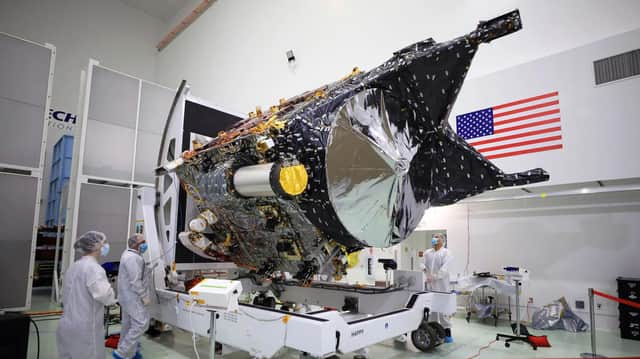Nasa's Deep Space Optical Comms Laser sends a message from 10 million miles away


A spacecraft over 10 million miles away has sent Nasa a signal via a distant laser. Now, the American Space Agency says this new technology could transform the way we communicate.
Nasa’s Deep Space Optical Communications or DSOC experiment proves to be successful as it marks the first time data has been successfully relayed through a laser from further away than the Moon – and marks a rapid increase, at more than 40 times the distance from the lunar surface.
Advertisement
Hide AdAdvertisement
Hide AdCurrently, most communications with crafts in deep space are achieved via radio signals sent and received from vast antennas on Earth, which have proven to be reliable. However, their bandwidth is limited, meaning that it is slow or impossible to send large files such as high-definition photos and videos.
But communicating through lasers could improve data rates by as much as 100 times, the space agency says. To test the technology, Nasa sent the Psyche mission which is carrying a laser transceiver that can both send and receive laser signals in near-infrared, which has equipment locked onto a Nasa laser beacon in California. Nasa says that the “first light” breakthrough is one part of a host of experiments that they hope will prove the laser technology can work.
“Achieving first light is one of many critical DSOC milestones in the coming months, paving the way toward higher-data-rate communications capable of sending scientific information, high-definition imagery, and streaming video in support of humanity’s next giant leap: sending humans to Mars,” said Trudy Kortes, director of technology demonstrations for the Space Technology Mission Directorate at Nasa Headquarters in Washington.
The space agency likens the laser signal to trying to point a light at a coin from a mile away, and it is constantly moving - in the 20 minutes it will take for the light to travel to Earth from Psyche’s furthest distance, both the planet and the spacecraft will have moved significantly.
Advertisement
Hide AdAdvertisement
Hide AdNow, the team needs to work to refine the systems that ensure the spacecraft is pointing its lasers in the right direction, where the data can be broken into bits that can be encoded in the photons of light sent by the spacecraft, which can be reassembled into images or other important data that will be sent by spacecraft – and perhaps humans – in the future.
Comment Guidelines
National World encourages reader discussion on our stories. User feedback, insights and back-and-forth exchanges add a rich layer of context to reporting. Please review our Community Guidelines before commenting.
